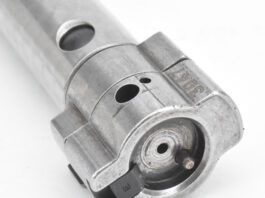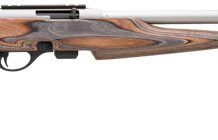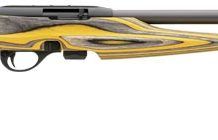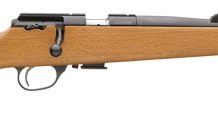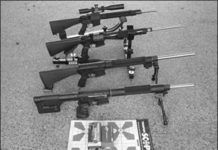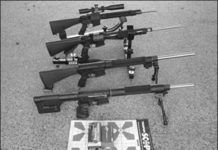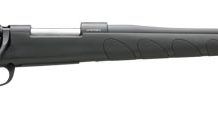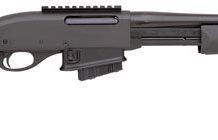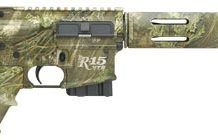AcuSport Debuts FFLGuard Service
Gays and Guns
Over At Gun-Tests.com: Marlin the Best .44 Magnum Rifle
Remington Introduces New Model 597 Rifles
Remington Unveils the New Model 597 TVP
Remington Introduces the Model 597 “Yellow Jacket”
Remington Bolt Action Model Five Including Youth Version
Accurate AR-15 Rifles: Buy the Fulton Armory, Rock River Guns
After our article on "Compact AR Carbines" (October 2007) and a related article on "AR-15 Adjustable Stocks" (March 2008), some of you warned us that we had opened Pandora's Box. Your prediction proved true, as we were besieged with other requests to visit additional limbs on the AR family tree: New caliber performance match-ups, more accessories testing, and national-match gun comparisons were just a few of the suggestions that popped up.
This month we chose one of the most popular requests, the AR-15 varmint/predator rifle. We quickly found that choosing four guns to test wasn't going to be easy. It seems almost every manufacturer out there is turning out some version of this genre. Rock River Arms alone lists four different models in its catalog, and that's before barrel and option selections!
There is also a fundamental difference in the definition of the varmint hunter. To some, a varmint hunter is someone who blazes away at prairie dogs and other such small targets from a rest. In parts of the South, varmint hunters are calling in foxes, coyotes, bobcats and other predators. This often requires carrying guns through thickets of brush, and a rest, if available, is a handy tree branch. The guns manufactured for these uses also have this same variety in their construction.
Since we had so many choices, we decided to narrow the field by setting the following parameters: a barrel length between 20 and 24 inches long, constructed of stainless steel, and capable of shooting the most popular ammo weight of 50 to 55 grains.
We got a quartet of guns that matched these specifications from Bushmaster, Fulton Armory, Rock River Arms, and Stag Arms, along with some options they felt the varmint/predator hunter would like.
Accurate AR-15 Rifles: Buy the Fulton Armory, Rock River Guns
After our article on "Compact AR Carbines" (October 2007) and a related article on "AR-15 Adjustable Stocks" (March 2008), some of you warned us that we had opened Pandora's Box. Your prediction proved true, as we were besieged with other requests to visit additional limbs on the AR family tree: New caliber performance match-ups, more accessories testing, and national-match gun comparisons were just a few of the suggestions that popped up.
This month we chose one of the most popular requests, the AR-15 varmint/predator rifle. We quickly found that choosing four guns to test wasn't going to be easy. It seems almost every manufacturer out there is turning out some version of this genre. Rock River Arms alone lists four different models in its catalog, and that's before barrel and option selections!
There is also a fundamental difference in the definition of the varmint hunter. To some, a varmint hunter is someone who blazes away at prairie dogs and other such small targets from a rest. In parts of the South, varmint hunters are calling in foxes, coyotes, bobcats and other predators. This often requires carrying guns through thickets of brush, and a rest, if available, is a handy tree branch. The guns manufactured for these uses also have this same variety in their construction.
Since we had so many choices, we decided to narrow the field by setting the following parameters: a barrel length between 20 and 24 inches long, constructed of stainless steel, and capable of shooting the most popular ammo weight of 50 to 55 grains.
We got a quartet of guns that matched these specifications from Bushmaster, Fulton Armory, Rock River Arms, and Stag Arms, along with some options they felt the varmint/predator hunter would like.



























